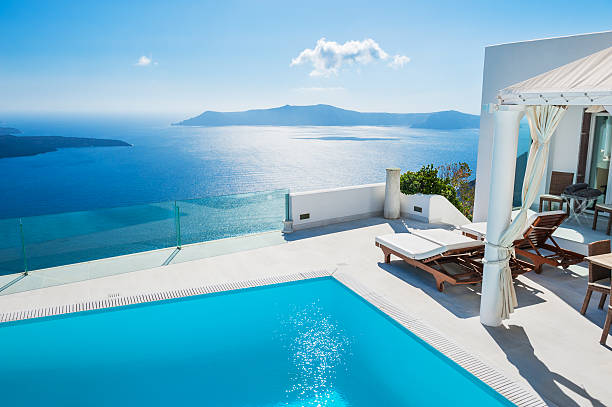Introduction to Luxury Vinyl Tile Flooring
Luxury Vinyl Tile (LVT) flooring has rapidly become a popular choice for homeowners and businesses alike, thanks to its remarkable combination of durability, aesthetic appeal, and affordability. This versatile flooring option offers a sophisticated look that can mimic the appearance of natural materials like wood, stone, and ceramic, without the associated maintenance and cost.
The Evolution of Vinyl Flooring
The journey of vinyl flooring began in the mid-20th century, but it has significantly evolved since then. Early versions of vinyl flooring were practical but often lacked the design sophistication that consumers sought. Over the decades, technological advancements have transformed vinyl flooring into the high-end product known today as Luxury Vinyl Tile. Modern LVT is characterized by its realistic textures, rich colors, and high-performance features that make it a superior choice for various applications.
Benefits of Luxury Vinyl Tile Flooring
LVT flooring offers numerous benefits that make it stand out in the crowded flooring market. One of its primary advantages is its durability. LVT is designed to withstand heavy foot traffic, making it ideal for both residential and commercial settings. Its wear layer protects against scratches, dents, and stains, ensuring the floor remains attractive over time.
Another significant benefit is its water resistance. Unlike hardwood or laminate flooring, LVT can be installed in areas prone to moisture, such as kitchens, bathrooms, and basements. This makes it a practical choice for homes and businesses looking for a stylish yet functional flooring solution.
Aesthetic Appeal and Versatility
Luxury Vinyl Tile is renowned for its ability to mimic the look and feel of natural materials. Advanced printing and embossing techniques allow LVT to replicate the intricate details of wood grain, the subtle veining of marble, or the textured surface of ceramic tiles. This versatility in design means that LVT can complement any interior style, from traditional to contemporary.
In addition to its realistic appearance, LVT offers a wide range of design options. Homeowners can choose from various colors, patterns, and plank sizes to create a customized look that suits their personal taste. The modular nature of LVT also allows for creative installations, such as herringbone or diagonal patterns, adding a unique touch to any space.
Installation and Maintenance
One of the appealing aspects of LVT flooring is its ease of installation. Many LVT products feature a click-lock system, allowing for a floating floor installation that does not require adhesives. This not only simplifies the installation process but also makes it possible for DIY enthusiasts to tackle the project themselves. For those who prefer professional installation, the process is typically quicker and less disruptive compared to other flooring options.
Maintenance of LVT flooring is straightforward and hassle-free. Regular sweeping and occasional mopping with a damp cloth are usually sufficient to keep the floor looking pristine. The water-resistant properties of LVT also mean that spills can be easily wiped away without causing damage. Unlike natural wood floors, LVT does not require refinishing, saving time and money in the long run.
Environmental Considerations
As environmental awareness grows, many consumers are looking for eco-friendly flooring options. LVT has made significant strides in this area, with many manufacturers prioritizing sustainability. Some LVT products are made from recycled materials, reducing the demand for virgin resources. Additionally, advances in manufacturing processes have minimized the use of harmful chemicals, making LVT a safer choice for indoor air quality.
Furthermore, the long lifespan of LVT flooring means that it needs to be replaced less frequently, reducing the environmental impact associated with production and disposal. When the time does come to replace the flooring, some LVT products are recyclable, further enhancing their eco-friendly credentials.
Comparing LVT to Other Flooring Options
When choosing new flooring, it’s essential to consider how LVT compares to other popular options. Hardwood floors are often prized for their natural beauty and longevity. However, they can be expensive and are susceptible to scratches, moisture damage, and require regular maintenance. In contrast, LVT offers a similar aesthetic at a lower cost, with greater resilience to everyday wear and tear.
Laminate flooring is another alternative, known for its affordability and ease of installation. While laminate can mimic the look of wood or stone, it often lacks the realistic texture and durability of LVT. Laminate is also less resistant to moisture, which can lead to warping or swelling in damp environments.
Ceramic and porcelain tiles are renowned for their durability and water resistance, making them suitable for bathrooms and kitchens. However, they can be cold and hard underfoot, and the installation process can be labor-intensive and costly. LVT provides a warmer and more comfortable surface, with simpler installation and a lower price point.
Choosing the Right LVT for Your Space
Selecting the perfect LVT flooring involves considering various factors, including the room’s function, aesthetic preferences, and budget. For high-traffic areas like hallways and living rooms, opt for LVT with a thicker wear layer to ensure longevity. In moisture-prone spaces, such as bathrooms and laundry rooms, look for LVT with enhanced water resistance features.
The design of the LVT should complement the existing décor of your space. For a rustic or traditional look, choose LVT that mimics natural wood with rich, warm tones. If you prefer a more modern or minimalist style, opt for LVT with sleek, clean lines and neutral colors. Stone-look LVT can add an element of luxury and sophistication to any room, making it a popular choice for entryways and dining areas.
Caring for Your LVT Flooring
Proper care and maintenance are crucial to preserving the beauty and functionality of your LVT flooring. While LVT is low-maintenance, following a few simple guidelines can extend its lifespan and keep it looking its best. Regularly sweep or vacuum the floor to remove dirt and debris that can cause scratches. Use a damp mop with a mild cleaning solution to clean the surface, avoiding harsh chemicals that can damage the finish.
Place mats at entryways to reduce the amount of dirt and moisture tracked onto the floor. Use protective pads under furniture legs to prevent dents and scratches. Avoid dragging heavy objects across the floor, as this can cause damage. With these preventative measures, your LVT flooring will remain a stunning feature of your home or business for years to come.
Innovations in LVT Flooring
The flooring industry continually evolves, with new innovations enhancing the performance and aesthetics of LVT. One such advancement is rigid core LVT, which incorporates a solid core layer for added stability and strength. This type of LVT is less prone to telegraphing subfloor imperfections and provides a more solid feel underfoot.
Another innovation is the introduction of enhanced acoustic properties in LVT. Some products feature built-in underlayment that reduces sound transmission, making them ideal for multi-story buildings or busy households. These advancements not only improve the user experience but also expand the range of applications for LVT flooring.
Conclusion
Luxury Vinyl Tile flooring has revolutionized the way we think about vinyl, offering a stylish, durable, and affordable option for both residential and commercial spaces. Its ability to replicate the look of natural materials, combined with its practical benefits, makes it a top choice for homeowners and designers alike. As the industry continues to innovate, LVT will undoubtedly remain at the forefront of flooring solutions, providing beauty and functionality for years to come.
Whether you’re renovating your home, outfitting a commercial space, or simply exploring new flooring options, Luxury Vinyl Tile offers a compelling blend of style, performance, and value. Its versatility and ease of maintenance ensure that it will meet the demands of any environment, making it a wise investment for the future.
.jpg)
.jpg)


